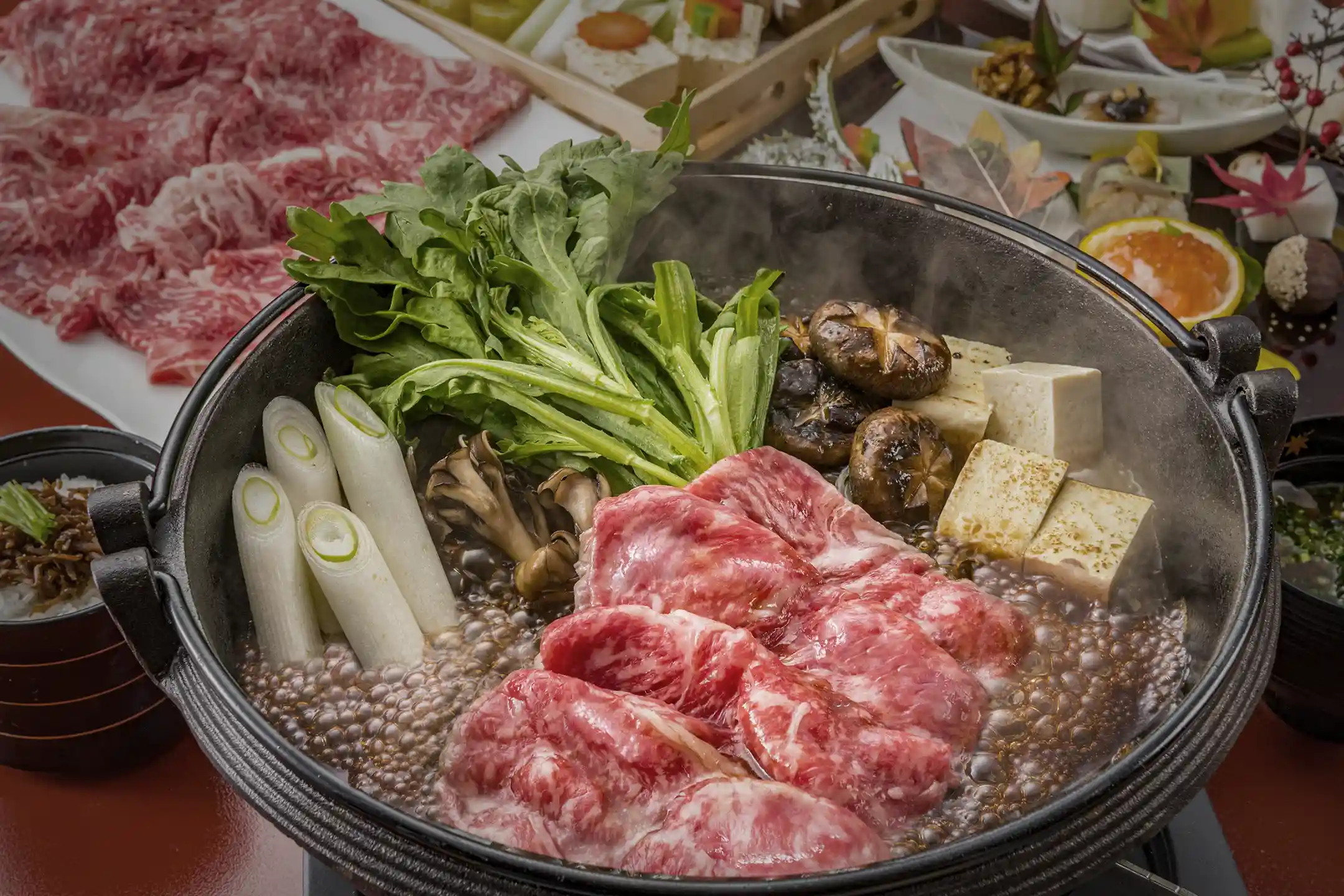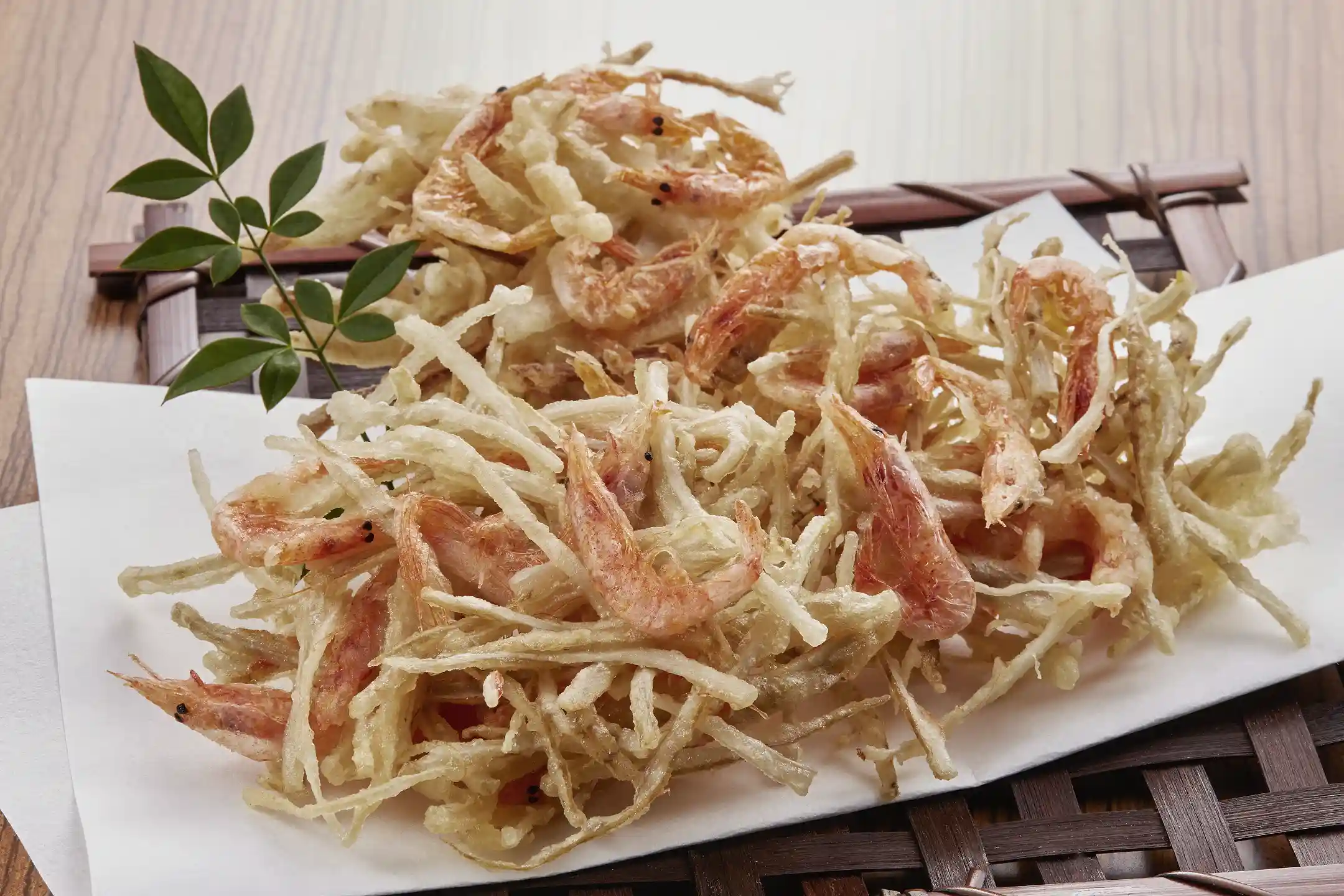Why not make your next special family holiday happen in Japan? Across the country, you’ll find abundant places where a luxurious stay and meaningful wellness experiences go hand in hand—good vacation spots for kids that don’t compromise adult comfort. For a family with an always‑busy calendar, travel is a perfect chance to restore balance—in body and mind.
From deep breaths in lush satoyama countryside to the calm of a true onsen retreat, and hands‑on sustainability learning through seaside activities, you can learn while you play. In this guide, you’ll discover family‑oriented, high‑value holiday spots that are uniquely Japanese, along with the latest trends—so you can plan a journey that nourishes you and is gentle on the environment.
You’ll also find ideas for activities you can enjoy together, tips for choosing where to stay, and pointers for keeping everyone safe and comfortable—all presented with the insight of a cultural guide and the lightness of a travel magazine. For your next break, step into a trip that deepens family wellness and strengthens your bonds.
Handpicked! Five Luxury Holiday Spots in Japan for Families—Good Vacation Spots for Kids
Here are five destinations across Japan where nature, culture, and high‑end hospitality come together—places where you and your children can enjoy yourselves and learn at the same time. For each region, you’ll find seasonal highlights and access notes to help you plan with ease.
Okinawa, Yambaru—Learning Sustainability through Marine Activities and Parent–Child Beach Yoga
In northern Okinawa, the Yambaru region—blessed with forest and sea, and recognized as a UNESCO World Natural Heritage site—offers an inspiring natural classroom. Snorkel together above radiant coral reefs while learning firsthand about conservation.
On local eco‑tours, for example, you can plant coral seedlings and later dive in to observe the very corals you planted(*1). Children grasp the importance of reefs and the life of the ocean ecosystem in a way they can feel, and you get to share that sense of wonder together.
For lodging, consider eco‑villas nestled in the forest or treehouse‑style resorts. Although it’s about a 2.5‑hour drive from Naha Airport, scenic stops along the way turn the journey into part of the fun. Yambaru is ideal not only for summer marine activities; its comparatively mild winters are great for nature observation, making it a year‑round spot for both sustainable learning and resort‑style relaxation.

Hokkaido, Furano—A Scent‑Led Wellness Retreat Among Lavender Farms
Come summer, Furano in Hokkaido is famous for lavender fields that blanket the hillsides. The aroma alone carries a powerful aromatherapy effect; visit as a family and you’ll relax together under an enveloping “shower of scent.”
Herb‑themed experiences around Furano are equally rich. In Nakafurano, for instance, you’ll find workshops on making lavender potpourri and even herb‑distillation classes, with programs that welcome primary‑school children. For overnight stays, glamping has surged in popularity. Near Furano, sites like “NORTH GLAMPER Furano” offer sweeping views of the Tokachi mountain range, dome‑style tents, and private tent saunas for families(*1).
A barrel sauna in the great outdoors helps adults reset body and mind, while kids enjoy the thrill of an extraordinary mini‑adventure. Access is roughly 2.5 hours by car from New Chitose Airport. In peak season, a temporary “Lavender Farm Station” opens and sightseeing trains run to match the blooms. While summer lavender is the headline, autumn foliage and winter snowscapes are beautiful, too—making Furano a year‑round fit for a family wellness retreat. Check seasonal schedules on official sites before you go.

Hakone—A Free‑Flowing Onsen Retreat
Hakone, with excellent access from central Tokyo, is a classic for luxury family travel. With abundant hot springs and a spectrum of stays—from storied ryokan to contemporary resort hotels—you can savor a restful onsen retreat together. For families seeking good vacation spots for kids near Tokyo, this classic destination shines.
If you’re traveling with little ones, a property offering private baths (family baths) lets you soak without worrying about other guests. At the long‑standing “Tenseien” in Hakone‑Yumoto, there are as many as 12 private open‑air baths, all fed by free‑flowing hot springs—yours to enjoy as a family(*1).
Baby baths and child‑size stools are available to borrow, and although diapered infants typically can’t use large public baths, the property accommodates families with priority reservations for private baths. This blend of privacy and safety is exactly the kind of hospitality that makes “luxury × traveling with children” work beautifully.
Hakone is about 90 minutes from Tokyo on the Odakyu Romancecar limited express, which makes it perfect for a weekend short break. With fresh spring greens, flaming autumn foliage, and strong year‑round scenery, you can balance hot springs, culture, and nature play—making Hakone a true all‑rounder for luxury trips with kids.
Kyoto, Miyama—A Satoyama Stay in Traditional Homes with Zazen
About 90 minutes by car from central Kyoto, Miyama in Nantan City spreads out in landscapes often called Japan’s original countryside. The thatched‑roof hamlet of Kayabuki no Sato feels like stepping into a folktale. Here, you can rent an entire thatched kominka as a family and experience satoyama life together.
While electricity and amenities are modern, the hearth‑centered living room and wood‑warm bedrooms create a calm that helps you forget daily noise. Some stays also offer zazen meditation sessions led by local monks, adding a mindful dimension to your time together. Life‑experience programs are plentiful: depending on the season, you can join in farm work and get close to living traditions.
Miyama even offers tours where you visit local households to help with cooking or farm chores—then share a hearthside meal of vegetable‑rich country dishes that warm everyone from the inside out(*1). In 2021, Miyama was named a “Best Tourism Village” by the UN World Tourism Organization (UNWTO), recognized for its commitment to sustainable tourism(*2).

Locals embrace the idea of “traveling as if you live here,” and share the appeal of sustainable satoyama living with pride. Spring means wild‑greens foraging; summer brings river play; autumn offers rice harvesting; winter invites mochi‑pounding around the hearth. A satoyama stay in Miyama naturally strengthens family bonds and deepens your understanding of Japanese culture.
Tokyo, Bay Area—Theme Parks VIP & Sky‑High Wellness Spas
Tokyo’s bay area blends cutting‑edge entertainment with restorative, high‑rise sanctuaries—one of the capital’s good vacation spots for kids and a pleasure for adults. First up is Tokyo Disney Resort—pure magic for kids, with elevated service for adults, too.
A standout in recent years is the resort’s Private VIP Tour. With a dedicated guide and near‑zero waits for popular attractions, it feels almost dreamlike—and groups of up to 10 (including infants under three and babysitters) can join(*1). You’ll tour the parks with efficiency beyond typical skip‑the‑line options, and watch parades from special viewing areas—so even on a short stay, you can honor all those “I want to do it!” wishes.
If you’re keen on hands‑on culture, try a ukiyo‑e woodblock printing workshop. Around the city you’ll find parent‑child classes—including summer courses where you print Hokusai’s “Under the Wave off Kanagawa” (yes, the famous “Great Wave”) yourself(*2).
After a day of fun, unwind at a bay‑area hotel spa with sweeping views. Flagship properties here boast stellar wellness facilities—perfect for resetting before tomorrow’s adventures.
Trends in Luxury Family Travel—The Latest in Wellness & Sustainability
Luxury travel with children continues to evolve, driven by two major currents: a stronger focus on wellness and a deeper commitment to sustainability. Rather than simply enjoying upscale services, more families—especially among affluent travelers—now look for trips that consider both their well‑being and the planet.
Below, we highlight two trends with current data: the rising demand for parent‑child wellness experiences, and the growth of sustainable‑luxury evaluation standards.
Rising Demand for Parent–Child Wellness Experiences
As global wellness tourism expands, family‑friendly wellness activities are seeing sharp growth. According to the Global Wellness Institute, wellness tourism has reached approximately US$651 billion annually, with a projected CAGR of 16.6% through 2027(*1).
Family wellness travel is a key driver. Where family trips once centered on “theme parks” or “resort downtime,” today more travelers prize educational value and mental–physical well‑being. High‑end resorts worldwide are investing in the “whole child” and crafting new value propositions.
In Japan, leading examples include Miyama’s satoyama wellness and art‑plus‑onsen retreats in Hakone. Experiences like these support children’s growth and leave everyone feeling refreshed—demand that will only grow. Major travel companies are also building out “family wellness tour” products, accelerating the market.

Sustainable‑Luxury Benchmarks
In luxury hotels and travel services, sustainability has become a key measure of excellence. Beyond comfort and opulence, travelers now seek “true richness” that considers environmental and social impact.
Concrete actions include carbon‑neutral operations and circular amenities. At the Imperial Hotel, one of Japan’s iconic luxury brands, the Tokyo property introduced CO2‑free (renewable‑energy) electricity building‑wide in October 2023, as part of its goal to achieve carbon neutrality by 2050(*1)—a high‑profile move among major facilities.
Japan also launched “Sakura Quality An ESG Practice (Sakura Quality Green)” in 2023, a certification that rates lodging properties on a five‑level scale for their SDG‑aligned practices. In March 2023, the Imperial Hotel’s Tokyo, Osaka, and Kamikochi properties achieved the top tier, “5 Gyoiko Zakura”—an industry first(*2). Third‑party certifications like this help travelers identify ethically aligned stays that combine luxury with care for people and planet.
Looking ahead, the measure of luxury will keep shifting from “how lavish” to “how future‑friendly.” Expect creative service ideas that deliver rich time while reducing impact—that’s the new standard for luxury travel.
How to Choose Where to Stay—Balancing Privacy with Kid‑Friendly Ease
Choosing the right accommodation is essential for a successful luxury trip with children. A place that gives adults real privacy while letting kids play safely and happily will lift satisfaction for everyone. Here, you’ll find a comparison of villa‑style stays and full‑service luxury hotels, what to check for kids’ clubs and babysitters, and how to approach dining—especially organic options.
Villa‑Style vs. Luxury Hotel
Villa rentals (whole‑house or cottage) offer standout privacy. With your own space, you can enjoy family time without worrying about neighbors. If your villa has a private pool or garden, kids can splash and explore without disturbing other guests—and you can keep a relaxed eye on them.
For multi‑generational trips, living rooms and kitchens create a comfortable hub for together time. After the children fall asleep, you and your partner can share a quiet glass of wine—one of the simple luxuries a villa makes easy. A kitchen also means flexibility: prep baby food or quick snacks your kids love.
Luxury hotels shine with service. Around‑the‑clock concierge, room service, and housekeeping free you from logistics so you can focus on your children. Many properties have spas, kids’ facilities, or even on‑site clinics, giving added peace of mind. With multiple restaurants and entertainment within the property, you can often “stay and play” without going anywhere.
Hybrid models are growing, too—villa wings within luxury hotels, which give you privacy plus full services. When you book, check room details (connecting options, private pool availability, etc.) to choose the best fit for your family.
Safety Standards for Kids’ Clubs & Babysitters
Kids’ clubs and babysitting services can be a gift on family trips: children dive into fun, adults get restorative time. To use them confidently, look closely at safety and quality.
Start with language support. Many overseas clubs operate primarily in English—confirm whether Japanese staff are present or whether simple Japanese support is available so your child won’t feel adrift. Some facilities now use multilingual stickers or translation devices.
Age‑appropriate programs are vital. Toddlers and grade‑schoolers need different activities and safety measures. Good clubs separate spaces and gear by age and design activities for each developmental stage—picture story time and drawing for little ones; treasure hunts or crafts for older kids.
Also check staff‑to‑child ratios. Smaller groups allow better attention—reviews can be handy for this. Finally, confirm emergency readiness: stocked first‑aid kits and links to medical facilities (some hotels have clinics) help you feel prepared.
Organic Dining and Allergy‑Friendly Options
Meals are a highlight—so let’s make sure everyone can enjoy them. With rising interest in health and food safety, luxury properties increasingly feature organic ingredients and allergy‑aware menus.
Many emphasize local sourcing: organic vegetables, pesticide‑free rice, pasture‑raised meats—dishes that thrill adults and give children fresh taste experiences. Some high‑end resorts in Shinshu, for example, serve family menus using produce from their own organic farms—there are even stories of “the veggie‑averse child who loved the soup here.”
Diverse dietary needs—vegan, gluten‑free, and more—are also easier to accommodate. At luxury hotels popular with international guests, plant‑based milks and gluten‑free breads at breakfast buffets are now common. These efforts align with the SDGs on “Health and Well‑being” and “Responsible Consumption,” making them more than indulgence—meaningful services with social value.
When you book, share allergy details accurately and request organic or special menus if you wish. Through food, you can care for family health and the environment—the new face of luxury travel.
How to Build a Stress‑Free Itinerary—Optimizing Transport and Schedule
With small children, the way you move and how you pace the days make all the difference. Even the finest trip can feel tiring if travel is a grind. Here you’ll find pros and cons by transport mode, the case for “slow travel,” a two‑base, multi‑night model, and the joy of folding in local seasonal events—all to reduce stress and raise satisfaction.
Benefits by Mode of Transport
Flying is often the fastest, which helps with little ones who struggle on long journeys. Airlines offer bassinets (especially on international routes) and priority boarding. Do plan for security lines and ear comfort at take‑off/landing.
Shinkansen and limited‑express trains offer a relaxed sense of travel: more space to move, nearby restrooms, and changing scenery to keep kids engaged. Picking up ekiben lunch boxes at stations and watching regional landscapes go by adds to the feeling of “we’re really traveling.”
As a rule of thumb, consider flight for 500 km or more, Shinkansen around 300 km, and car for local or suburban trips. Choose with your child’s temperament, health, and your luggage load in mind.

A Two‑Base, Multi‑Night Model for Deeper Stays
It’s easy to overstuff an itinerary and end up chasing from place to place. Instead, try a “two‑base, multi‑night” model: choose two hubs and spend at least two nights in each. You’ll explore more deeply—with room to breathe.
Think “Kyoto (3 nights) + Okinawa (4 nights)” for city‑and‑island contrast, or “Tokyo (2 nights) + Hakone (2 nights)” for urban energy paired with hot‑spring calm. Fewer pack–unpack cycles help kids keep a steady rhythm.
“Slow travel” continues to rise: deliberately seeing fewer places, but enjoying them more. Many affluent families travel with the mindset that “we can always come back,” which makes day‑to‑day plans more flexible. You can adjust to your child’s pace and add activities as the mood strikes. A two‑base approach delivers that freedom—and higher satisfaction for everyone.
Weaving in Local Festivals
For vivid memories, include local events unique to each region. Japan’s seasonal festivals are a treasure for children—hands‑on culture you can’t get from a textbook.
In summer, consider a fireworks festival. Major displays sell reserved seats and even hotel plans that guarantee firework views. While the seats cost more, having a secure, roomy vantage point is ideal with little ones. Wear yukata and make it a quintessential Japanese summer evening.
In autumn, traditional festivals can be wonderfully immersive. Some communities welcome visitors to help pull floats or even carry a mikoshi portable shrine. Kids don a festival happi and join locals with spirited calls—it’s a confidence‑building cultural experience.
In winter, snow‑country kamakura (igloo) festivals and illumination events bring magic. Local festivals connect you with people, deepen the story of your trip, and create family memories to cherish.
.webp?width=750&height=500&name=To%20carry%20a%20mikoshi%20(portable%20shrine).webp)
Safety, Budget & Packing Checks—Prepare Smart for Peace‑of‑Mind Travel
Finally, let’s make a pre‑trip checklist for a safe, comfortable journey. On safety: know your medical and insurance details. On costs: sketch a rough budget and ways to save. And don’t forget a packing list—especially important when traveling with children. A little extra preparation prevents on‑the‑ground trouble and helps you enjoy the trip with a calm mind.
Child Safety Measures and Local Medical Care
Health and safety come first. For overseas travel, comprehensive travel insurance is essential—ideally with cashless treatment options. Choose a plan that covers the whole family, and confirm coverage amounts and conditions.
Note nearby medical resources before you go. Ask your hotel concierge or tour operator for the closest pediatric clinic and emergency facility. Abroad, you can often request lists of English‑ or Japanese‑speaking hospitals.
Common issues include fevers, tummy troubles, and minor injuries. Pack a first‑aid kit and know basic care. Prepare well—but resist anxiety. A forward‑looking, “we’ve got this” mindset is part of what makes family travel work.
A Rough Trip Budget
Even on a luxury trip, budgeting matters. List major items: transportation (air, rail, rental car), lodging, meals, activities, and souvenirs/miscellaneous.
As a ballpark: for a family of four spending five days at an Okinawa resort, budgeting in peak season might look like ¥200,000 for flights, ¥200,000 for four nights at a high‑end hotel, ¥100,000 for meals and local transport, ¥50,000 for activities, and ¥50,000 for souvenirs—about ¥600,000 total (varying by season and grade). Add travel insurance and transfers to/from the airport. This is about capturing a fleeting chapter of your child’s growth—plan so you won’t second‑guess your choices later.
Essential Items to Pack
A thoughtful packing list saves the day. For transit, bring age‑appropriate entertainment: favorite toys or books, downloaded shows and games on a tablet, quiet activities you can do together (sticker books, origami, card games). Skip noisy toys out of courtesy, and pack child‑sized headphones.
For health and hygiene, include a first‑aid kit, masks, sanitizing wipes, and a small thermometer. Sun care matters, too: high‑SPF sunscreen, a sun hat, and sunglasses.
Why not add a few low‑impact items? Personal bottles and chopsticks help reduce single‑use plastics. A foldable eco‑bag works for souvenirs or laundry—and shows your child how to care for the environment in everyday ways.
Clothing‑wise, bring comfy outfits for active days and one smart set for hotel dinners (check any dress codes). Some hotels don’t provide children’s pajamas, so pack those in particular. With good prep, you’ll travel light on the ground and enjoy more smiles all around. Once everything’s ready, it’s time to set off with confidence.
Closing:
A luxury‑and‑wellness family trip lets you step away from routine, restore your energy, and strengthen your connections. Japan offers a stage of sea, mountains, and countryside—where cutting‑edge services meet living traditions.
From Yambaru’s sustainability‑minded resorts and Furano’s scent‑soaked calm, to Hakone’s art‑and‑onsen journeys, Miyama’s satoyama stays, and the Tokyo Bay area’s urban wellness, each spot shines in its own way. What unites them is thoughtful design that brings smiles to every family member. Travel trends are shifting toward what people truly value.
The rise in parent‑child wellness experiences and sustainability initiatives shows that travel can be more than leisure—it can be learning, growth, and an investment in your shared future. If you’re searching for good vacation spots for kids in Japan, use these insights and tips as you plan your next holiday. Across the country, moments where wellness and luxury harmonize are waiting for you. Refresh your body and mind, and set out on a journey that brings your family even closer—let’s go.
Author Bio

Maoko Shibuya
Content Planner & Writer Holding a master’s in Digital Marketing and experience across global markets, Maoko blends international perspective with a deep appreciation for Japan’s cultural heritage. She plans and writes compelling narratives that reveal the country’s beauty and depth, drawing on her passion for travel, local cuisine, and cultural exploration.





/Kazunoko%20Matsumae-zuke%20(Herring%20Roe%20and%20Seafood%20Pickles).webp)